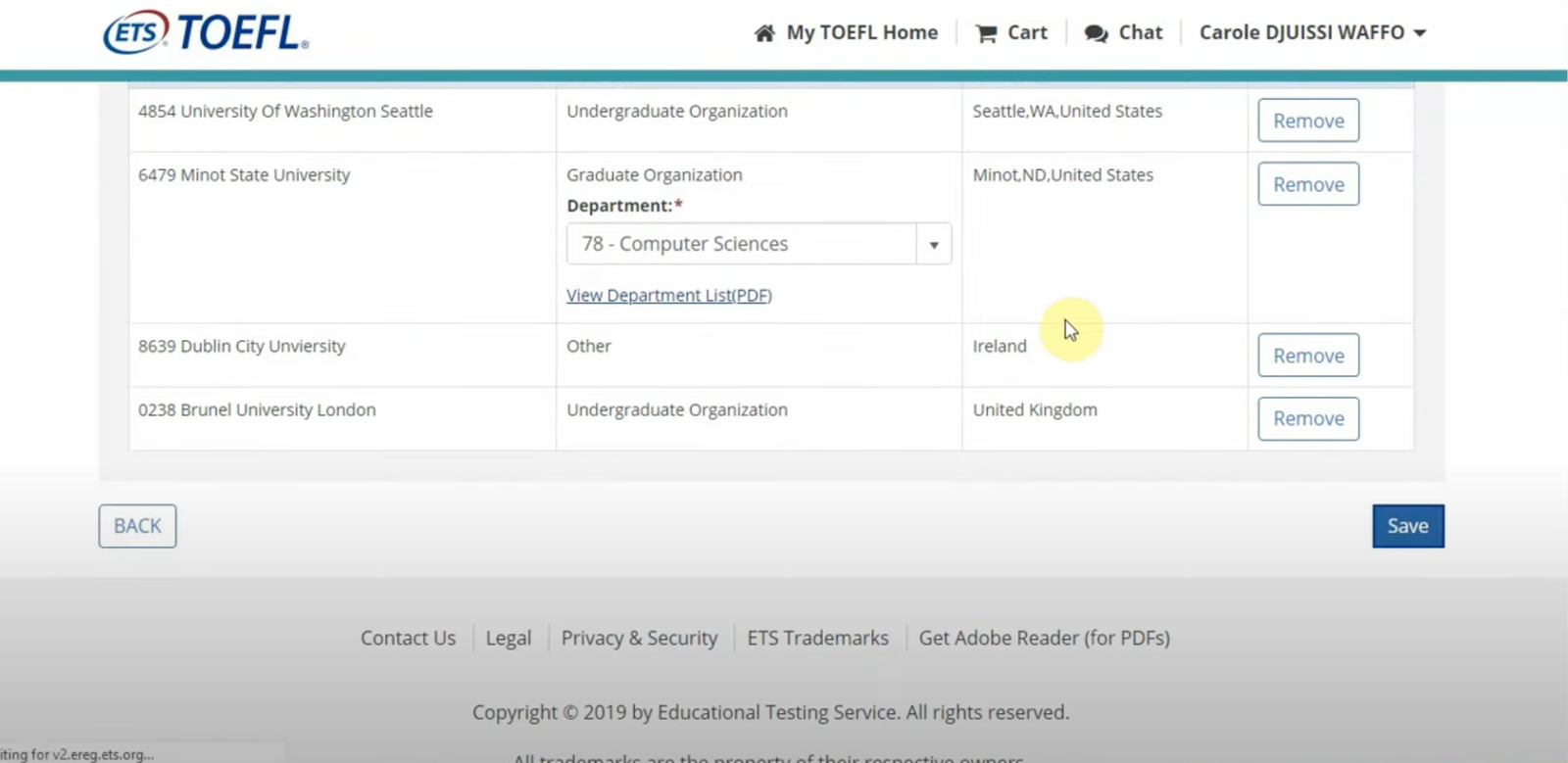
How to send GRE and TOEFL scores to the University?
When applying to universities, students often need to send their GRE and TOEFL score cards to the institutions they are interested in. However, the process of sending scores can be confusing and time-consuming. This article provides a step-by-step guide on how to send GRE and TOEFL scores, as well as common issues that students may face and answers to frequently asked questions.
Test Score Fees
After taking GRE and TOEFL, you have the option to send the scores to the institution of fellowship programs of your choice. Here are two key aspects of the GRE & TOEFL test score reporting fee:
- Score Recipients: On the test day, you can select up to four institutions or programs to receive your GRE or TOEFL test scores without any additional charges.
- Additional Score Report: If you want to send your TOEFL or GRE scores to more than the initial four institutions, each additional scores comes with a fee. The fee for both GRE and TOEFL are mentioned below for you.
TOEFL Additional Score Reports: ₹ 1,950 each
GRE Additional Score Reports: ₹ 2,900 each
How to send GRE scores?
To send your GRE exam score, you need to follow these steps:
- Log in to your ETS account.

2. Under the “My Test” section, select “Score Recipients.”

3. Search for the institutions or organizations you want to send your scores to by entering their names in the search box or by browsing the list of institutions.

4. Once you have selected your score recipients, click “Continue” and review your order.

5. Enter your payment information and submit your order.

You can also send your scores by phone or mail by contacting the GRE Program. Please note that there may be additional fees for phone and mail orders.
How to send TOEFL scores?
To send your TOEFL test score, you can follow these steps:
- Log in to your ETS account on the TOEFL website.

2. Click on “Send Additional Score Reports” from your account home page.

3. Select the destination(s) to which you want to send your score reports. You can choose up to four institutions or agencies to receive your scores.

4. Enter the required information for each institution, such as the name and address, and pay the required fee for each destination.

5. Review your order and submit it.

You can also send additional score reports by phone, mail, or fax, but the fastest and most convenient way is to use your ETS account online. Remember that it may take up to 10 days for the institution to receive your score report, so plan ahead and send your scores well before any application deadlines.
Common problems faced by students
There are a few common problems that students may face when sending their TOEFL and GRE scores. Here are some of them:
- Technical issues: Technical issues, such as a slow internet connection or a problem with the ETS website, can cause difficulties in sending TOEFL & GRE scores. To avoid this, it’s best to make sure you have a reliable internet connection and to complete the process during a time when the website is less busy.
- Incomplete or incorrect information: Students may forget to enter all of the required information or enter incorrect information for the recipient institution. This can result in the score report being sent to the wrong place or being delayed. It’s important to carefully review all information before submitting the request.
- Delays in processing: ETS can take several days to process score report requests, especially during peak periods. Students should plan ahead and send their scores well in advance of any application deadlines.
- Payment issues: Payment problems, such as an expired credit card or insufficient funds, can prevent the score report from being sent. Students should ensure that they have a valid payment method and that they have sufficient funds to cover the cost.
- Inability to access ETS account: Students may have difficulty accessing their ETS account due to forgotten passwords or other issues. In this case, they should contact ETS customer service for assistance.
By being aware of these common issues and taking steps to avoid them, students can ensure that their TOEFL and GRE score cards are sent successfully and on time.
Sending GRE and TOEFL scores can be an essential part of the university application process. It is crucial to follow the correct steps and avoid common issues to ensure that scores are sent successfully and on time. By following the step-by-step guide provided in this article and referring to the frequently asked questions section, students can navigate the process of sending scores with ease.
If you still have questions about GRE and TOEFL, contact our team of experts to guide you through the process.
Frequently asked questions
Good and reputed universities usually require test scores, so if you have a good score, it is recommended to send it. It will work in your favor.
If you provided the correct university and department code during the exam, then sending your scores again is not required. However, it is advisable to contact the department and reconfirm with them that they have received it. If not, you may need to send the scores again.
You need to choose two codes - University code and Department Code. The codes should be available on the University website, usually in the FAQs or application guidelines or admissions page.
You can call or email the university to get the information. If you still cannot find the codes, you can put "others" in the department code and inform them that you have sent the scores to the "other" department. Note that the institute code is compulsory - you need to know which University to select. If you are unsure, it is better to call or email the University for assistance.
No, you can use the search feature and select your university and department.
Some universities have a central database of scores accessible by multiple departments, in which case the department code does not matter much, and all departments will have access to the scores. In some universities, different departments do not communicate with each other, and they have their own repository of scores. In this case, you need to email and/or call the University and inquire if they will take the scores from the other department to whom you had sent it by mistake while giving the exam. Most universities will accept it, but if they don't, you will have to resend it.
The answer depends on the university. You need to call the different departments and inquire if they will accept the score from the other. If they do, you don't need to send the score again.
If you have reported your score once and then report a new score, the university will have both the scores. They usually consider the latest score, which is usually your best score. It will make a difference only if your scores have improved substantially. However, some universities might look at the scores in detail to see section-wise details, but most of them will go with the best score. With GRE Select, you can choose which score you want to send to the college. Only that score will be sent to the university, and they will not know about your other scores (unless in your first attempt, you had sent the old score). This option is not currently available for GMAT and TOEFL.
GRE and TOEFL cutoffs vary among universities and programs. Meeting or exceeding the recommended scores can improve your chances of admission, especially for competitive programs. However, other factors may also be considered. It's important to check with specific universities and programs to understand their policies and requirements. Thorough research is always recommended.
It depends on the university's policies. Some universities allow applicants to submit their applications without the test scores and then provide the scores later, while others require the scores to be submitted before the application deadline. It's always better to check with the university beforehand to avoid any confusion or delays in the application process.
Some universities may consider waiving the GRE/TOEFL requirement under certain circumstances, such as if the applicant has completed their undergraduate education in English or if they have work experience in an English-speaking environment. However, the waiver policies vary from university to university, and it's best to check with them to see if you qualify for a waiver.
Yes, you can retake the tests as many times as you want. However, you should keep in mind that some universities may only consider your best scores, while others may take an average of all your scores. It's always better to aim for a high score in the first attempt to avoid the hassle and expense of retaking the tests.
It usually takes about 10-15 days for the universities to receive the test scores after they have been sent. However, during peak application season, it may take longer, and it's always better to send the scores well in advance of the application deadline to avoid any delays.
If the university has not received your test scores even after the estimated delivery time, you should contact the testing agency and inquire about the status of the scores. If the scores have been sent, but not received, the agency will resend them. If there was an error in sending the scores, you may have to resend them again.
GRE/TOEFL scores are an important part of the admission process, but they are not the only factor that universities consider. Other factors such as your academic record, work experience, statement of purpose, letters of recommendation, and extracurricular activities are also considered. However, a good GRE/TOEFL score can help strengthen your application and increase your chances of getting admitted to the university of your choice.
If the university requires the scores to be sent to a specific department along with the institution code, they will provide the department code. If they do not, you can select "Department Not Listed" as an option.
PPI stands for "Personal Potential Index," which is an ETS tool that provides standardized, applicant-specific information on core personal attributes that graduate deans and faculty have identified as important for success in graduate study. Your university may want this information to make better admissions decisions.
It is okay that both scores are visible. Universities will consider the highest score. However, it's important to ensure that ETS sends the higher score to the universities.
You can send the universities an email to inquire about the status of your GRE score.
It is not a problem if other university names are visible on your GRE score sheet, as it does not impact your application. However, if you want, you can crop the image to hide the names.




